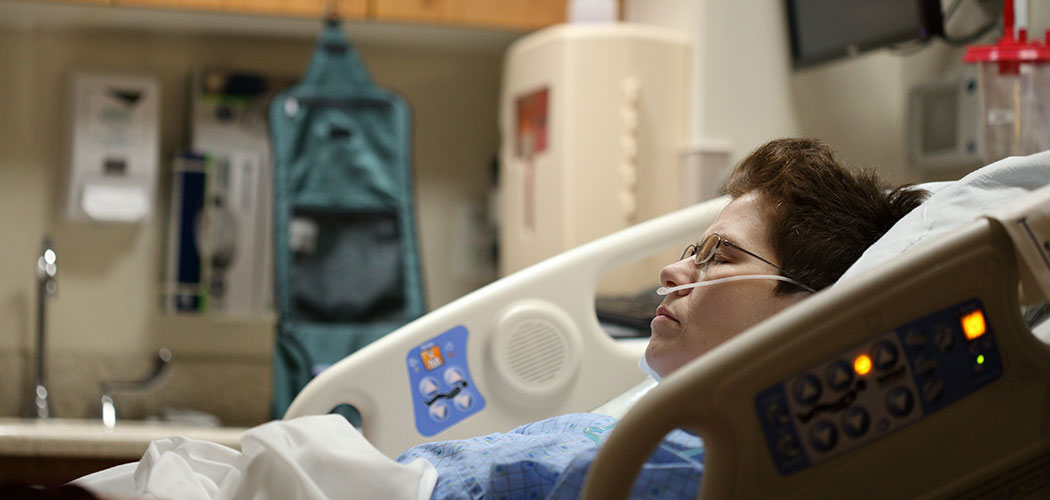Western Australian research is aiming to decrease noise levels in intensive care units (ICUs) by implementing improvements in acoustic design.
Up to 50% of patients in ICUs experience sleep disturbance due to noise which can hinder recovery and negatively impact their health. Staff report noise levels negatively impact their work performance, patient connection and job satisfaction.
The study from Edith Cowan University (ECU) and Fiona Stanley Hospital, investigated the impact of noise on patient sleep quality and clinician performance.
Noise was primarily caused by alarms from medical equipment and discussions among clinical staff and was a common problem across all ICUs, said ECU Adjunct Senior Research Fellow Dr Emil Jonescu.
“In the ICU there are a lot of beeps and alarms from machines and some of that noise can’t be mitigated because of the important information provided for clinicians,” he said.
The research was conducted at the 40-bed ICU in Fiona Stanley Hospital, Perth, and involved clinicians, medical practitioners, academics, and industry specialist consultants.
Sleep disruption was a major issue raised by patients in intensive care and problems with sleep often persisted after discharge, causing distress and creating a barrier to recovery, said Director of ICU Research at Fiona Stanley Hospital Professor Ed Litton.
“Thinking holistically about how we make the experience as comfortable as possible for patients whilst in intensive care is so important,” he said.
The room acoustics analysis revealed that at times maximum noise levels in the ICU ranged from 60 to 90 dB(A), surpassing the thresholds for sleep disruption outlined by the World Health Organization guidelines.
“Our aim was to try and find the optimal balance of good information flow for clinicians and rest and recovery for patients, and we found there are certainly some design improvements that can be made,” said Dr Jonescu.
Impact to staff
Part of the study investigated health professionals’ perceptions of noise impact on patient sleep and staff duties in the ICU.
Staff reported ICU noise negatively impacted their work performance, patient connection and job satisfaction.
“They indicated that their biggest concern was the impact to patient sleep quality, however, they also believe a quieter ICU would improve clinicians thinking ability,” said Dr Jonescu.
“ICU clinicians and patients share the same environment and it’s clear that improvements in noise levels will benefit everyone.”
The biggest gains came from reducing noise between rooms, the researchers found. Through a 3D modelling process, researchers simulated various acoustic treatment upgrades. Room layout and equipment precluded many noise reduction options. These were limited to perimeter surface sound absorption, whereas direct transmission pathways, and volume settings offered potential for more significant noise reductions.
“One of the most significant findings of the study was that by concentrating on noise reduction strategies for the partition walls between patient rooms, transference of noise from room to room can be significantly reduced,” said Dr Jonescu.
“The findings showed a significant reduction of 14 decibels with the doors between rooms in the open position.”
Practical recommendations
The research provided practical recommendations for design approaches to noise mitigation. It also identified potential for medical equipment designers to consider alarm speakers’ directivity focusing the sound on sound-absorbing wall finishes and reducing noise exposure toward patients.
“Future research could also explore the minimum volume level that machines can operate at where there is no impact to clinicians’ ability to do their work,” said Dr Jonescu.
“A reduction in volume from the default 100 per cent maximum could have massive impact in reducing overall noise, and it wouldn’t cost anything.”
The study Mitigating Intensive Care Unit Noise: Design-Led Modelling Solutions, Calculated Acoustic Outcomes, and Cost Implications was published in HERD: Health Environments Research & Digital Design Journal.









13 Responses
It would be interesting to conduct this study in an open ICU such as Sir Charles Gairdner.
Exactly what I was thinking.
Husband was in ICU at SCGH for 17 days in 2015. I went home night times hearing the machine noises in my head.
Husband was in ICU in Midland for 4 days in July 2024 where they have individual rooms. I didn’t think about it until I read this but the noise difference between the two was huge!
As he was recovering, he had Physio in SCGH where they got him up moving. He had a bowel accident, with no control. I overheard a staff member telling another staff member describing it and saying he wasn’t going to be able to eat lunch after that. If it wasn’t open planned it wouldn’t have been discussed so openly where everyone could hear it. My husband was embarrassed. The nurse would probably still have discussed it but it wouldn’t have been heard by every other patient and visitor in the 4 – 5 beds in close proximity.
Excellent project. It would be interesting to conduct this study in an open ICU such as Sir Charles Gairdner.
Interesting. Noise in the Perioperative and PACU areas is also an issue for patients and staff, elevating stress and anxiety, fatigue and difficulty with clear communication for patient/staff.
I would love to see some research and innovative ways to reduce noise in these environments.
Patient in Joondalup hospital for 2 weeks. Came by ambulance 48 hrs in bright corridor/ED/Observation ward then admitted to private room in medical ward. In ED/Obs ward, continual loud monitor alarms, although some dimmed at night mostly had bright lights on me from next to cubicle, staff & patients loudly talking through night. On ward 24hour multiple alarms loudly beeping in corridor, lights shining from corridor into room reduces darkness. I was in severe pain also limited sleep. No one even offered earplugs. I could only sleep 2-3hrs in 24. Feels like torture. Staff do their best but must be very stressful workplace. This is an important study.
As a retired RN with experience in ICU and CCU units I have only spent two overnight admissions in an ED unit and found it very difficult to sleep listening to my own monitor and every others!. Hope you can solve this problem.
21 days in ICU and 15 days in ward after cardiac arrest in April 2024
Found the noise and alarms made long sleep near impossible
Staff did there best
CCRN working in an open design ICU. The noise is horrendous.
I often complain to my husband that I just need some quiet. The constant stimulation with personal and professional conversations plus heightened awareness of the numerous different alarm’s beeping. And I get to leave after 12 hours.
We need to acknowledge how important sleep is and assist our patients to be able to sleep.
Having been a patient a number of times I rarely got any sleep in shared rooms as staff were very loud at night, doors continuously left open as staff came and went dependant on the needs of the patient I was sharing with. Discussions at night even in the corridor were loud. When I had a single room the noise diminished considerably as I could shut my door although staff often came in then left and didn’t shut the door so I had to ring the bell to get them to come back as I was unable to get out of bed and walk.
My ex husband was ventilated for 3 weeks in ICU and is alive today to tell the story of how scary the noises of the alarms were. Even more scary were when the Nurses pulled his sheet up from the head they didnt tell him. Remember hearing is the last to go!
Finally, some common sense! I have nursed in 4 countries and there are critical care beds in hospitals that are “pods.” We don’t have them here. This would solve so much in infection control, sound, rest, healing, emotional trauma, privacy, etc. Same for emergency rooms ie confidentiality and safety. These pods control lighting.
After working in ICU for more than 30 years, old style, open units, I don’t listen to music at home very much, hated the phone ringing, TV, loud noises etc. All I wanted was silence. Six years later slowly coming around.
Was an ICU pt. for 3 months on a ventilator, after becoming aware of my surroundings the noise levels were quite unbearable. Thankfully I am a Reg. Nurse so could distinguish the source of all the different alarms. For a non medical person it would have been scary. Noisiest were the collectors of the rubbish and laundry areas. No consideration for pts. in the unit. Maybe all trolleys etc should have hovermats.